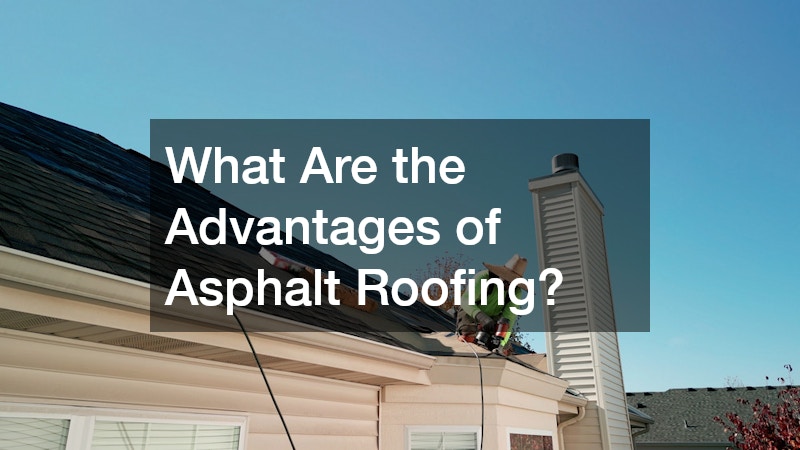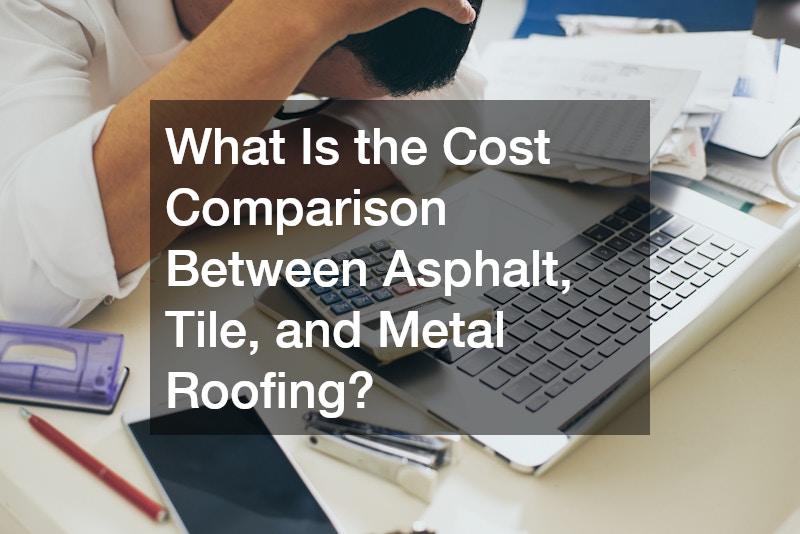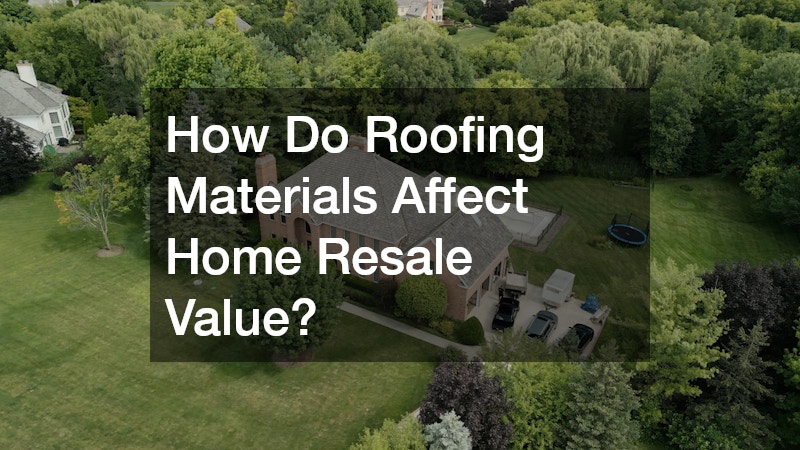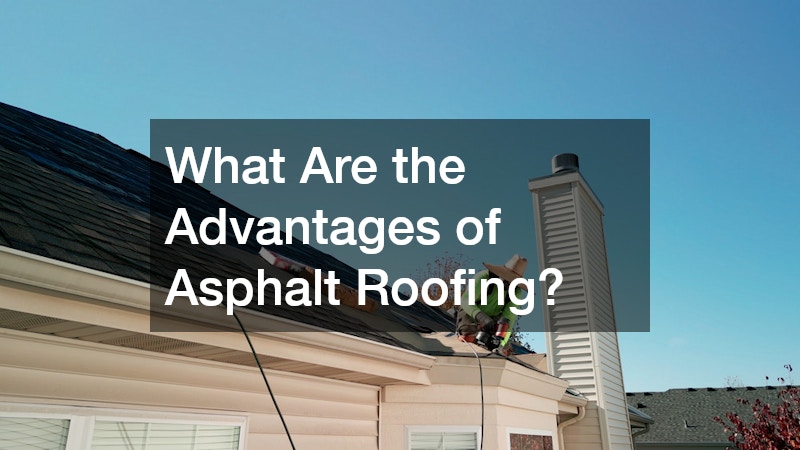
Selecting the right roofing material is a critical step in any construction or home improvement project. Whether you’re building from the ground up or replacing an aging roof, your choice affects everything from energy efficiency to curb appeal. Asphalt, tile, and metal each have distinct advantages depending on climate, budget, and architectural style. Collaborating with a qualified roof contractor can help you make an informed decision, but understanding the basics first gives you the upper hand. In this guide, we explore how these residential roofing options differ and what they mean for long-term value, performance, and sustainability.
What Are the Advantages of Asphalt Roofing?

Cost-Effectiveness
Asphalt shingles remain a top choice due to their affordability. Ideal for those managing a strict renovation budget, asphalt is commonly available at nearly every lumber yard and offers excellent coverage at a lower price point. Its value per square foot makes it one of the most widely used materials in residential roofing.
Easy Installation
Asphalt shingles are favored by local roofers for their ease of installation. Because they’re lightweight and flexible, they don’t require specialized framing or extra structural reinforcement. Most roof contractors can complete an asphalt project swiftly, which reduces labor costs and minimizes disruption to your household.
Durability and Lifespan
Despite their affordability, asphalt roofs provide solid durability. On average, you can expect 15 to 30 years of service depending on the quality of the product and local weather conditions. Advances in waterproofing material have also improved modern asphalt shingles, helping prevent leaks and moisture damage that once shortened their lifespan.
Design and Color Variety
A major advantage of asphalt is the abundance of styles and colors. Whether you’re going for a traditional suburban look or aiming to create a custom roof that stands out, asphalt provides diverse aesthetic options. Some shingles are even manufactured to replicate the look of slate or wood shake, giving you the style of luxury materials without the cost.
Maintenance Requirements
Maintenance for asphalt roofs is minimal compared to other materials. Regular inspections, clearing debris from gutters, and replacing damaged shingles as needed will keep your asphalt roof in excellent condition. Asphalt is also compatible with many types of rooftop lease installations, such as solar panel systems, making it a flexible choice for eco-minded homeowners.
Why Choose Tile Roofing?
Aesthetic Appeal
Tile roofing delivers unmatched aesthetic charm. It adds architectural depth and classic appeal, particularly suited for Spanish, Mediterranean, or Southwestern-style homes. Whether you choose clay or concrete, tile offers a premium look that elevates your home’s exterior.
Longevity and Durability
Tile roofing is known for its incredible lifespan. Clay tiles can last up to 100 years in optimal conditions, while concrete tiles commonly exceed 50 years. These materials are naturally resistant to rot and insect damage and can withstand harsh weather when installed correctly by a roof contractor familiar with tile systems.
Energy Efficiency
Tile roofs offer high thermal mass, which means they absorb and slowly release heat. This contributes to a stable indoor temperature and can significantly lower energy bills. In warmer climates, this energy-saving feature is one of tile’s standout advantages.
Environmental Benefits
Tile roofing materials are derived from natural resources and are recyclable at the end of their lifespan. Additionally, the low-maintenance nature of tile reduces the need for chemical treatments or frequent replacement, making it an environmentally friendly option for those committed to green building practices.
Resilience to Weather
Tiles are built to endure. From high winds to hailstorms, they resist damage where lighter materials might fail. Paired with the right waterproofing material and flashing systems, tile roofs offer superior protection against water intrusion—an important consideration in areas prone to heavy rains.
Is Metal Roofing the Best Option?
Longevity and Low Maintenance
Metal roofing is increasingly popular thanks to its extreme durability and low maintenance requirements. Many metal roof contractors offer warranties of 40 to 70 years, depending on the product. Because metal doesn’t rot, warp, or suffer insect damage, it holds up well in diverse climates with minimal upkeep.
Energy Efficiency
Reflectivity is one of metal’s biggest strengths. Metal roofing deflects sunlight, which helps regulate indoor temperatures and reduces the load on HVAC systems. Cool roof coatings are often applied to enhance this effect, delivering substantial savings on energy bills in hot climates.
Lightweight Material
Unlike tile, metal is lightweight, putting less strain on a home’s structure. This makes it an excellent choice for retrofits and additions where structural reinforcement would otherwise be necessary. It’s also easy to install over existing materials in some cases, reducing demolition and labor time.
Modern Aesthetic
For those seeking a contemporary or industrial look, metal roofs provide sleek, clean lines that complement modern architecture. Metal can also be customized in a range of finishes, colors, and panel types, giving homeowners creative control over their custom roof design.
Environmental Impact
Metal roofing is often made from recycled materials and is fully recyclable at the end of its life, making it one of the most sustainable roofing options. Many metal roof contractors emphasize green building certifications and work with materials that meet LEED standards, appealing to environmentally-conscious consumers.
How Does Climate Affect Roofing Material Choice?
Temperature Fluctuations
Materials like asphalt may deteriorate faster in extreme heat or cold, whereas tile and metal are better suited to handle thermal expansion and contraction. A roof contractor can evaluate local climate patterns to help you select the best fit for your environment.
Rain and Snow Resistance
Proper drainage is essential in areas with heavy rainfall or snow. Asphalt and metal perform well with proper slope and gutter systems, while tile may require reinforcement due to its weight. Combining your roofing material with reliable waterproofing material ensures maximum protection against water intrusion.
Wind Resistance
Metal roofing is highly wind-resistant, especially when fastened correctly by metal roof contractors using interlocking panel systems. Tile also performs well in wind zones if adequately anchored, whereas asphalt shingles may be more prone to lifting during storms.
Humidity Considerations
In humid climates, mold and algae can become a concern. Metal and tile are less susceptible to microbial growth, making them more suitable for tropical or coastal environments. Specialized asphalt shingles treated with anti-algae coatings can help counteract this issue.
Seasonal Durability
If your region experiences extreme seasonal changes, metal’s flexibility and resistance to cracking make it a sound choice. Tile, though sturdy, can become brittle in freeze-thaw cycles if not properly maintained.
What Is the Cost Comparison Between Asphalt, Tile, and Metal Roofing?

Initial Installation Costs
Asphalt is the most budget-friendly option up front, often costing half as much as tile or metal per square foot. Tile is the most expensive due to its weight and labor-intensive installation, while metal typically falls in the mid-to-high range. Quotes from local roofers will vary based on home size and material brand.
Long-Term Investment Return
Metal and tile roofs, despite their higher installation cost, offer long-term savings through reduced maintenance and lower energy bills. Asphalt, while cheaper initially, may need replacement sooner, which could add up over time.
Maintenance and Repair Costs
Asphalt repairs are typically simple and low-cost. Tile repairs can be expensive, especially if individual tiles crack or shift. Metal roofs require fewer repairs overall but may be more costly to fix if issues like seam separation or corrosion occur.
Potential Insurance Discounts
Some insurers offer discounts for impact-resistant roofing like metal or Class 4 asphalt shingles. The fire-resistant nature of tile and metal roofing can also lead to policy reductions. Ask your roof contractor about material ratings that may influence your homeowner’s insurance premiums.
Financing and Budgeting Tips
Financing options through roofing companies or home improvement lenders are available for all roofing types. Budgeting ahead with help from your roof contractor can make premium materials more accessible while spreading costs over time.
How Do Roofing Materials Contribute to Home Energy Efficiency?
Insulation Properties
Tile’s natural insulation and the reflective coatings available on metal enhance indoor temperature regulation. Asphalt is less insulating but can be paired with underlayment products from your local lumber yard to improve performance.
Reflectiveness and Cooling
Metal roofing stands out for its solar reflectance. Lighter colors and cool roof coatings reflect sunlight, decreasing heat absorption. Tile’s thermal mass also works in its favor by stabilizing indoor temps over time.
Impact on Utility Bills
By reducing the need for air conditioning and heating, tile and metal roofs often result in significant energy bill reductions over the years. Asphalt’s impact is more moderate but still beneficial when properly installed with waterproofing material.
Environmental Certifications
Many roofing products now carry certifications like ENERGY STAR or meet LEED criteria. If you’re considering a rooftop lease for solar panels, metal and asphalt roofs tend to accommodate those systems more easily than tile.
Sustainable Options
Recyclable materials, locally sourced tiles, and metal made from recycled content are great for reducing environmental impact. Your roof contractor can help you find green alternatives through reputable suppliers and lumber yards.
Which Roofing Material Offers the Best Lifespan?
Lifespan Expectations for Asphalt
Asphalt roofs generally last 15 to 30 years. Architectural or laminated shingles tend to last longer than basic three-tab varieties, especially when maintained well.
Lifespan Expectations for Tile
Tile roofing boasts a 50 to 100-year lifespan. Its longevity makes it one of the most cost-effective materials over time despite its initial expense.
Lifespan Expectations for Metal
Metal roofing commonly lasts 40 to 70 years, depending on the material used—aluminum, steel, or copper—and the quality of installation by your metal roof contractors.
Factors Reducing Lifespan
Improper installation, lack of maintenance, and environmental exposure can reduce roof life regardless of material. Regular inspections from experienced local roofers can help mitigate these risks.
Extending Your Roof’s Lifespan
Routine cleaning, debris removal, prompt repairs, and the use of premium waterproofing material will maximize roof longevity. Consulting your roof contractor about the best care practices is a wise investment.
Are There Any Environmental Impacts of Different Roofing Materials?

Eco-Friendly Materials
Tile and metal are leading the charge in eco-conscious roofing. Asphalt, while not as sustainable, is improving through recycling programs at many lumber yards and roofing centers.
Roofing Recycling Options
Metal roofing is 100% recyclable. Asphalt shingles can also be repurposed for road paving. Tile, though heavier, can be crushed for other uses or reused on different structures.
Carbon Footprint Considerations
Producing asphalt generates more emissions than clay or metal, but transportation distances and energy usage in manufacturing also matter. Ask your roof contractor about sourcing materials locally to reduce the overall carbon footprint.
Waste Management Practices
Choosing recyclable materials and working with contractors who adhere to proper disposal protocols helps limit landfill contributions. Some local roofers even offer cleanup programs that recycle tear-off debris.
Contribution to Urban Heat
Lighter-colored metal roofs reflect sunlight and reduce urban heat island effects. Asphalt, particularly in dark colors, can absorb heat and raise localized temperatures. Opting for reflective or cool-colored options helps mitigate this effect.
What Are the Maintenance Efforts Required for Asphalt, Tile, and Metal Roofs?
Regular Inspection Routines
All roofing types benefit from seasonal inspections, especially after severe weather. A licensed roof contractor can identify minor issues before they become costly repairs.
Common Repair Needs
Asphalt may develop curling or cracking shingles. Tile can shift or crack under stress. Metal may require resealing seams or fasteners over time. Early intervention prevents deeper problems.
DIY vs Professional Maintenance
Some tasks, like cleaning or visual inspections, can be handled by homeowners. However, more intensive repairs or anything involving a rooftop lease system should always be left to professionals to avoid voiding warranties.
Cleaning Techniques
Pressure washing is generally discouraged on most roofs. Asphalt and tile can be cleaned with soft brushes or algae-removing treatments. Metal roofs often need only rinsing to maintain their appearance.
Mitigating Damage Over Time
Keep your roof clear of tree limbs, debris, and standing water. Apply appropriate sealants and replace damaged components quickly to prolong your roof’s lifespan.
How Do Roofing Materials Affect Home Resale Value?

Curb Appeal
A custom roof made of tile or metal can greatly enhance your home’s visual appeal, catching the attention of potential buyers. Even architectural asphalt shingles can elevate a home’s profile if chosen thoughtfully.
Buyer Preferences
Today’s buyers often seek energy efficiency, durability, and low maintenance. Metal and tile meet these criteria and are seen as premium upgrades in many markets.
ROI on Roof Upgrades
While asphalt provides a reliable return, metal and tile roofs typically offer higher resale value due to their long lifespan and aesthetic quality. A professionally installed roof by trusted local roofers can significantly influence closing prices.
Market Trends in Roofing
Eco-friendly and energy-efficient roofs are becoming more desirable. Features like rooftop lease readiness, solar integration, and sustainable materials are now key selling points.
Negotiating Power at Sale
Homes with newer, high-performance roofs offer strong leverage during negotiations. Buyers often accept higher asking prices when they know the roof won’t require replacement in the near future.
Closing Thoughts
Choosing between asphalt, tile, and metal roofing comes down to balancing cost, climate, aesthetics, and long-term performance. Asphalt remains an affordable and versatile choice, while tile roofing excels in beauty and longevity. Metal roofing offers a sleek, modern look with impressive durability and sustainability. With input from a reliable roof contractor and consideration of your goals, budget, and environment, you’ll be well-equipped to select the best roofing solution for your home.
